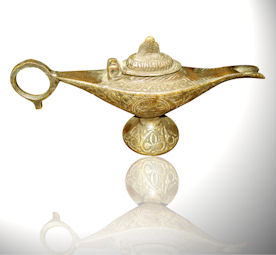
I sent a request out to prospect researchers on the APRA PRSPCT-L list-serv asking them to share common prospect research myths. Following is a summary of my favorite responses!
Myth: Everyone over age 60 is a planned gift prospect.
Fact: While age is a factor, affinity is also an important predictor of planned giving and statistical data modeling is even better at predicting who is a likely planned giver.
Myth: Lots of real estate holdings makes someone a major/planned gift prospect.
Fact: We have a lot of real estate investors, large and small, in the Pacific NW. People buy a few apartment or commercial buildings as a retirement investment and they accrue in value, so development officers think the prospects can give big. I have to educate them that, unless they are giving us the building, capacity is based on income from the building and that I calculate capacity differently for personal real estate and income-generating real estate.
Myth: We need to know the prospect’s net worth.
Fact: Net worth is all of someone’s assets minus all of their liabilities. We can’t know all of either, because that includes a lot of private information.
Myth: Prospect researchers can find anything about anyone, including: how much is in their bank accounts; personal tax records; credit history; social security numbers; or wills.
Fact: Much information is private, like the examples above, and is not available to us legally or ethically.
Myth: Google. You can find everything on Google. Researching is really just Googling a prospect. “I don’t need you—I use Google.” “If you just look harder, you can find out everything about him.”
Fact: Internet search engines can only find about 20% of what is available on the internet. Just ask Mike Bergman who coined the phrase.
Myth: You can just get a report from the “database” with everything, right?
Fact: While software companies that pull information together for us have gotten very sophisticated, there is no “one” database.
Myth: A prospect can be fully researched in less than half an hour, especially with one of those fancy research services we subscribe to—just push a button and a complete profile comes out, right?. Or better yet, do a “quick 10 minute profile” on a prospect. (Sorry, but is this ever possible — ten minutes?)
Fact: Searched, verified, and synthesized information barely starts with an hour. Anything less risks being haphazard, which might help in a pinch, but is far from ideal.
Myth: Very little data about a prospect is needed in order for the researcher to produce a comprehensive profile (such as: name spelled correctly, address, occupation, how someone is related to our organization).
Fact: Names are far more common than most people suspect and a good match requires as much starting information as possible.
Myth: When asked for “a little more information about so-and-so,” true prospect researchers intuitively know exactly how much more information is enough.
Fact: Good communication is a two-way street between the requestor and the researcher. Some process or structure usually helps too.
…And the last MYTH? Well, it isn’t one really. It’s a FACT: In ancient times, before the discoveries of electricity, personal computers, and the internet, prospect researchers lived in lamps and responded to vigorous rubbing.
Other Post You Might Like:
Can you really trust prospect research? 10 things you should know








